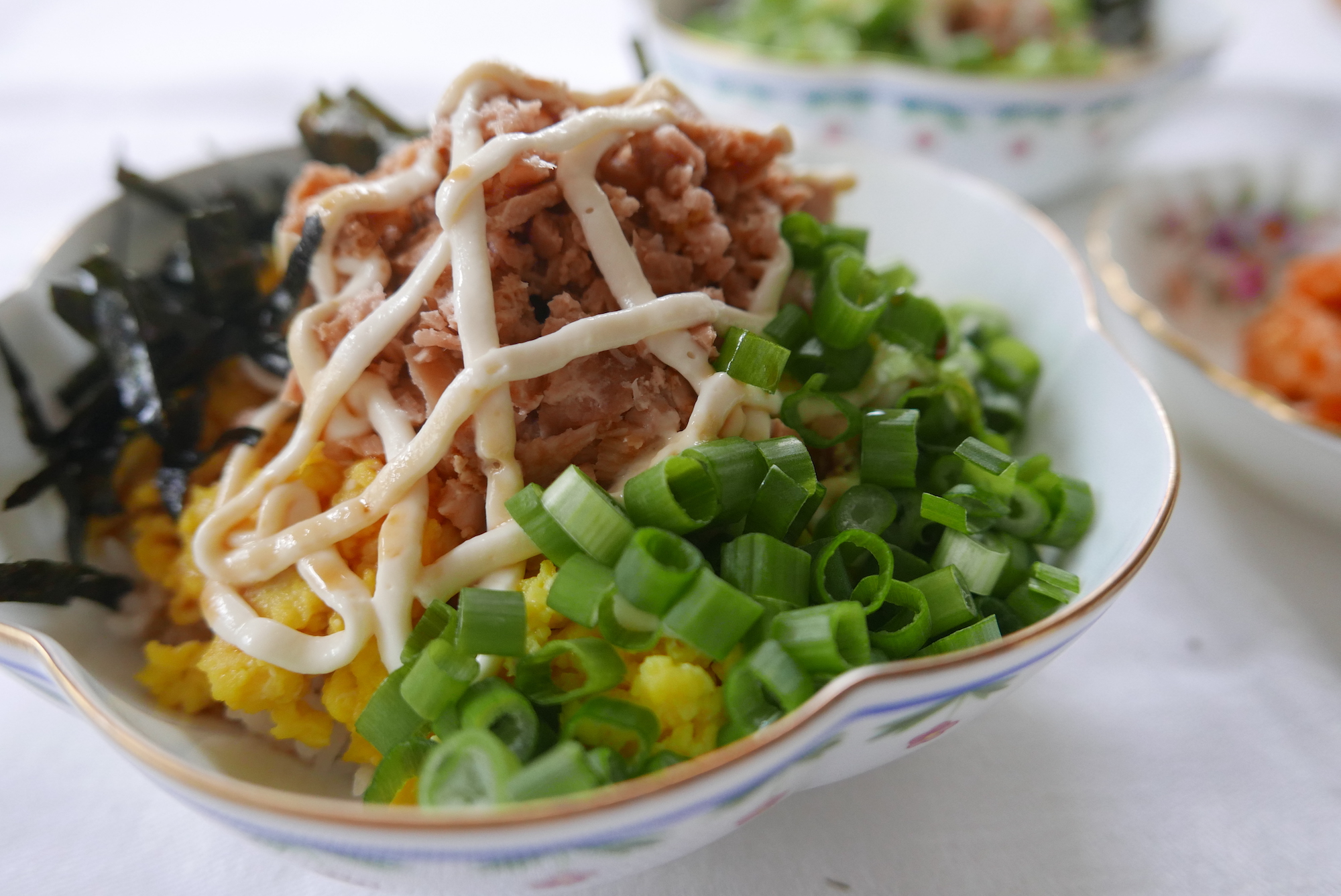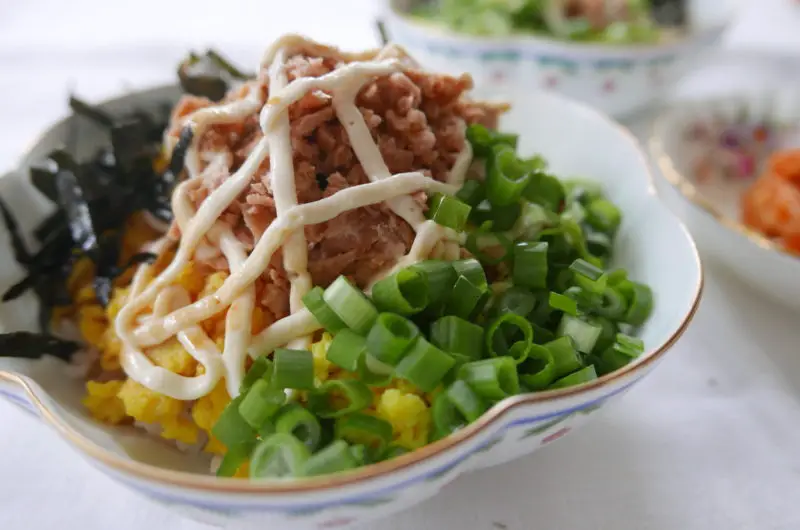Tuna mayo rice is a particularly popular food amongst the younger generations in South Korea. For students and young businessmen/women, tuna mayo gives a simple and affordable option that consistently tastes delicious.
Typically, tuna mayo rice only takes 30 minutes to make. While your rice cooks, you can gather and prepare all your tuna mayo toppings. The variations for this simple dish are endless, and you can make it entirely your own. For our blog post, we want to give you the most basic version of tuna mayo rice. Then, we can discuss additional popular toppings you can add as well!

So, let’s get started!
What is Tuna Mayo Rice?
At home and in restaurants, tuna mayo rice comes in a bowl over rice. These simple rice bowls allow for a delicious mixture of ingredients that can fill the belly at a very cheap price. We wanted to share the basic building blocks for making a successful Korean tuna mayo rice bowl! The most basic of ingredients are as follows:
First Layer: Rice

Your rice makes up the first layer of our dish. In Korea, people typically eat short-grained rice with a higher starch content than long grain rice. For tuna mayo rice, I recommend buying ‘Calrose style’ rice for something similar in the U.S.A. Nishiki is a Calrose style rice brand I often use and trust! Below, I listed different Calrose style brands you can find on Amazon or your local grocery store.
Second Layer: Eggs
Next, Koreans add a layer of egg on top of the rice. Typically, Koreans use two different methods for the egg layer.
The simple homemade version involves scrambling the eggs before placing them on top of the rice.
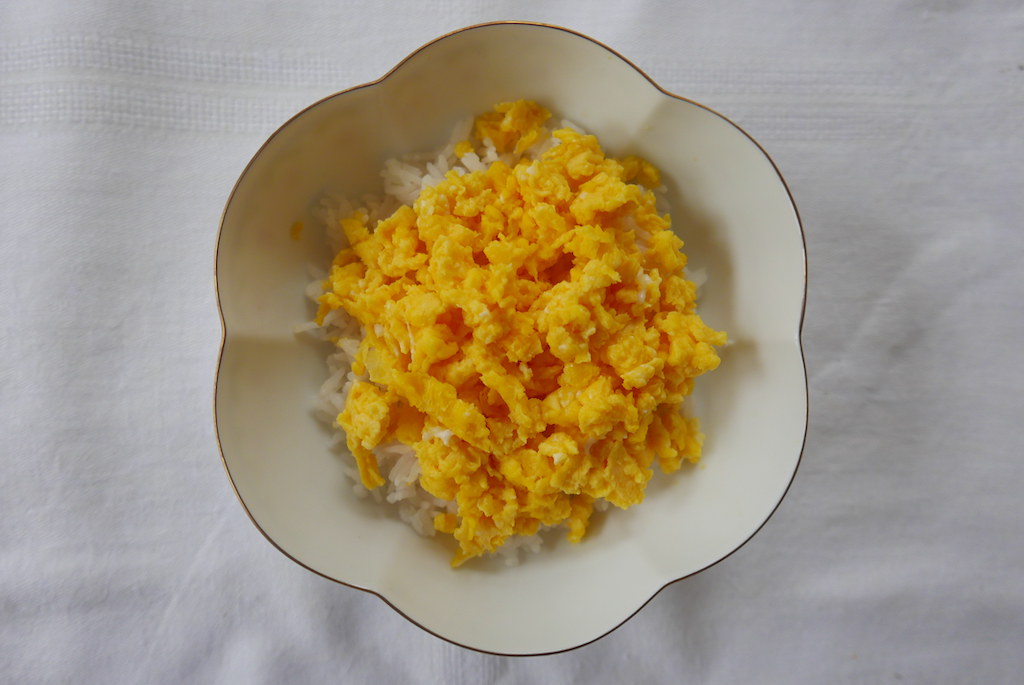
On the other hand, if you want to try the restaurant version, you can cook a thin layer of egg on your pan. First, scramble the raw egg in a mixing bowl. Then, add a thin layer of egg to the heated frying pan. Once one side is cooked, flip and cook the other side of the egg. After cooking the eggs, cut them into thinly sliced pieces and sprinkle them on top of your rice.
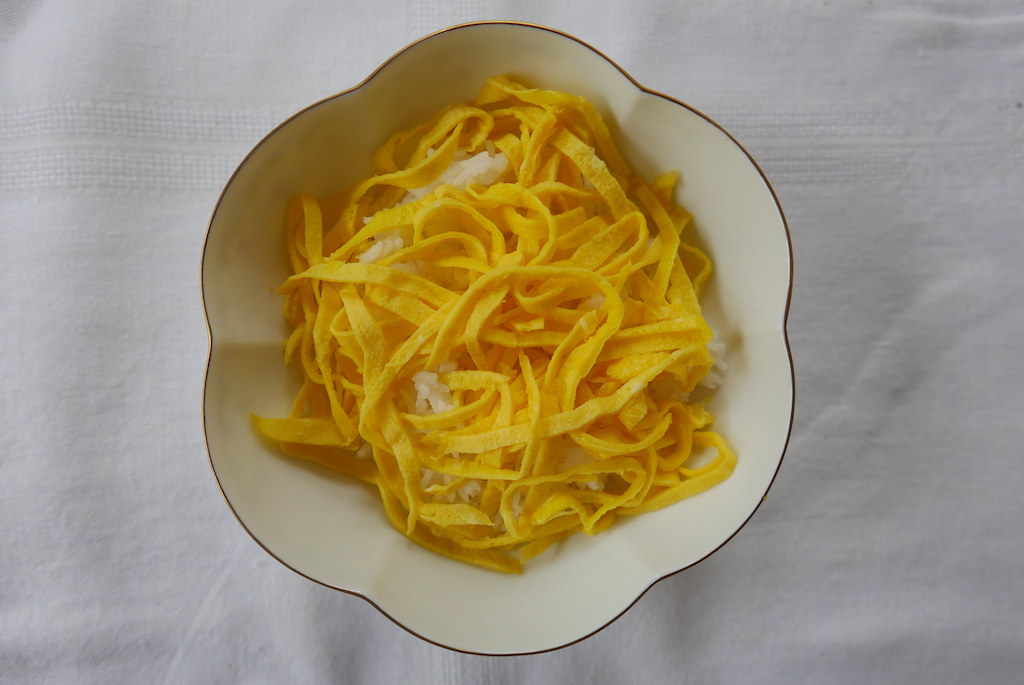
Either way, your eggs will taste yummy!
Third Layer: Tuna
Tuna makes up the third layer in your tuna mayo rice bowl. When picking out your tuna, do not go to the fresh seafood section of the grocery store. Instead, head to the center aisles to find the canned versions. Canned tuna is incredibly popular in South Korea, and is often used in dishes such as kimchi jjigae, kimchi fried rice, and kimbap. Both chunk and solid canned tuna work. Either way, make sure your tuna is in bite-size pieces.
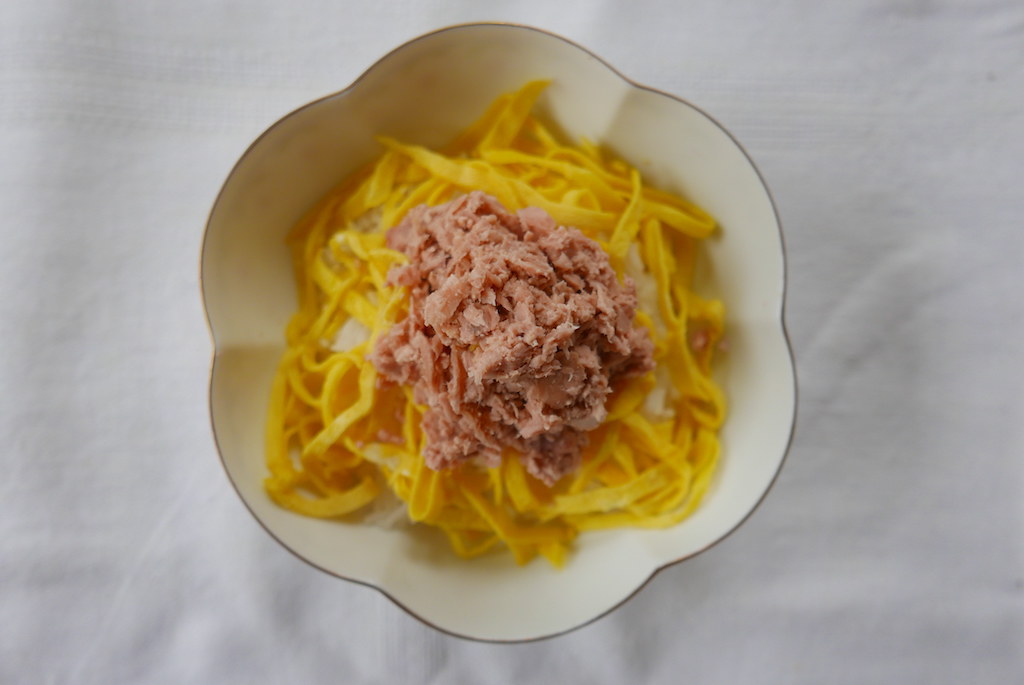
Nearly all fish contain some level of mercury. While tuna contains less mercury than fish like mackerel or swordfish, it has higher mercury levels than other fish such as salmon or tilapia. On that note, when picking out your tuna, the FDA suggests limiting the consumption of albacore or yellowfin tuna to one serving per week, and skipjack tuna to a maximum of three servings per week. When looking at canned and pouched tuna, “white tuna” refers to albacore, and “light tuna” refers to yellowfin or skipjack. Read over the packaging to double-check the type of tuna you are getting!!
Fourth Layer: Mayonnaise
Fourth, you add mayo! When adding mayo, Koreans do not just plop a spoonful on top of their food. Instead, either using a squirt bottle, piping bag, or ziplock with the corner cut, they drizzle it over their rice. The drizzle makes a prettier presentation and helps distribute the mayo evenly!

I do not have a particular recommendation with regards to the brand of mayo. Honestly, I love mayo and have tried all the brands over the years. With this dish, it doesn’t make much of a flavor difference. If you want a sweeter mayo, I recommend using Japanese mayo available in many international food sections. Personally, I prefer the mild and creamy Hellman’s brand.
Fifth Layer: Toppings (Dried Seaweed, Green Onions, and Sweet Yellow Onions)
The fifth layer of tuna mayo rice includes all your toppings for your rice bowl.
The first topping, dried seaweed strips, are always included with tuna mayo rice. When picking out your seaweed strips, do not buy the sesame oil or other flavored versions for this recipe. You want the plain, natural flavor of the seaweed. It is easy to cut your seaweed into thin strips. First, fold your seaweed paper back and forth like you are making a childhood fan. Then, with scissors, cut thin strips using the short side of the fan. Do not cut lengthwise. Sprinkle seaweed strips on top of your mayo rice!

Next, add thinly sliced green onions and sweet yellow onions. If you do not want both, I recommend using the green onions (as pictured above) as they are always on the tuna mayo rice.
The sweet yellow onions are completely optional. I like them for the crunchy texture. If you desire onions, but yours is a bit too pungent raw, place your onions in cool water for 15 to 20 minutes while building your bowl. The water helps release some of the strong flavors!
Once you finish slicing your green and sweet yellow onions, add on top of your rice bowl!
Sixth Layer: Brown Sauce
For the sixth and final layer, you add a soy sauce-based brown sauce. You can serve the sauce in two ways. Firstly, you can add the sauce when you add the mayo. While just as good, this first method is not typical in Korean restaurants. Typically, restaurants give you a side of the brown sauce, which you can then pour over top of your tuna mayo rice bowl at the end. This second way allows you to control on how much sauce you want while you mix the entire bowl together.

If you are feeling lazy and do not wish to mix a sauce, you can use teriyaki or other store-bought Asian sauce. While it won’t taste like perfectly authentic Korean tuna mayo rice, it will still be yummy!
Below are some products I use when making my Korean rice bowl!
Tuna Mayo Rice Further Toppings
While Korean include the above ingredients in almost every tuna rice bowl you can buy, you can sometimes order versions with extra toppings. Below are two variations that I enjoy as well!

Spicy Tuna Mayo Rice
If you want a little more spice on your rice bowl, pan fry some kimchi and add below your tuna. The caramelized pan-fried kimchi adds sweetness and spice to the dish. If your kimchi isn’t very spicy, add gochugaru to your kimchi as you pan fry. This adds a little more kick.
Salad Tuna Mayo Rice
Sometimes, you can order tuna mayo rice with mixed greens added to the bowl. I enjoy this when I want less rice and more vegetables during my meal. When adding greens, I add them at the end with the green onions, seaweed strips, and sweet yellow onions!
How Do You Like Korean Tuna Mayo Rice?
After trying the most basic version, have you altered it to your taste? If you have, we would love to hear about your version in the comments below or via email at [email protected].

For further Korean recipes, you can check out some of our other blog posts!
- Romaine Sangchu Geotjeori (Romaine Lettuce Salad)
- Maneul Jangajji (Pickled Garlic)
- Gyeranjjim (Steamed Eggs)
- Korean Barbecue Dipping Sauces
- Doenjang Jjigae (Soybean Paste Stew)
- Ppopgi (Korean Street Cookies)
Finally, we love hearing from you through our social media! You can follow us at @carvingajourney on Instagram, Twitter, Facebook, and Pinterest. Also, you can subscribe to our blog by joining our mailing list. We hope you enjoyed learning about Korean tuna mayo rice!
Carving A Journey is a participant in the Amazon Services LLC Associates Program, an affiliate advertising program designed to provide a means for sites to earn advertising fees by advertising and linking to Amazon.com. Although we may earn commissions for our endorsement, recommendation, testimonial, and/or link to any products or services from this website, these opinions are my own and I fully support these products.

